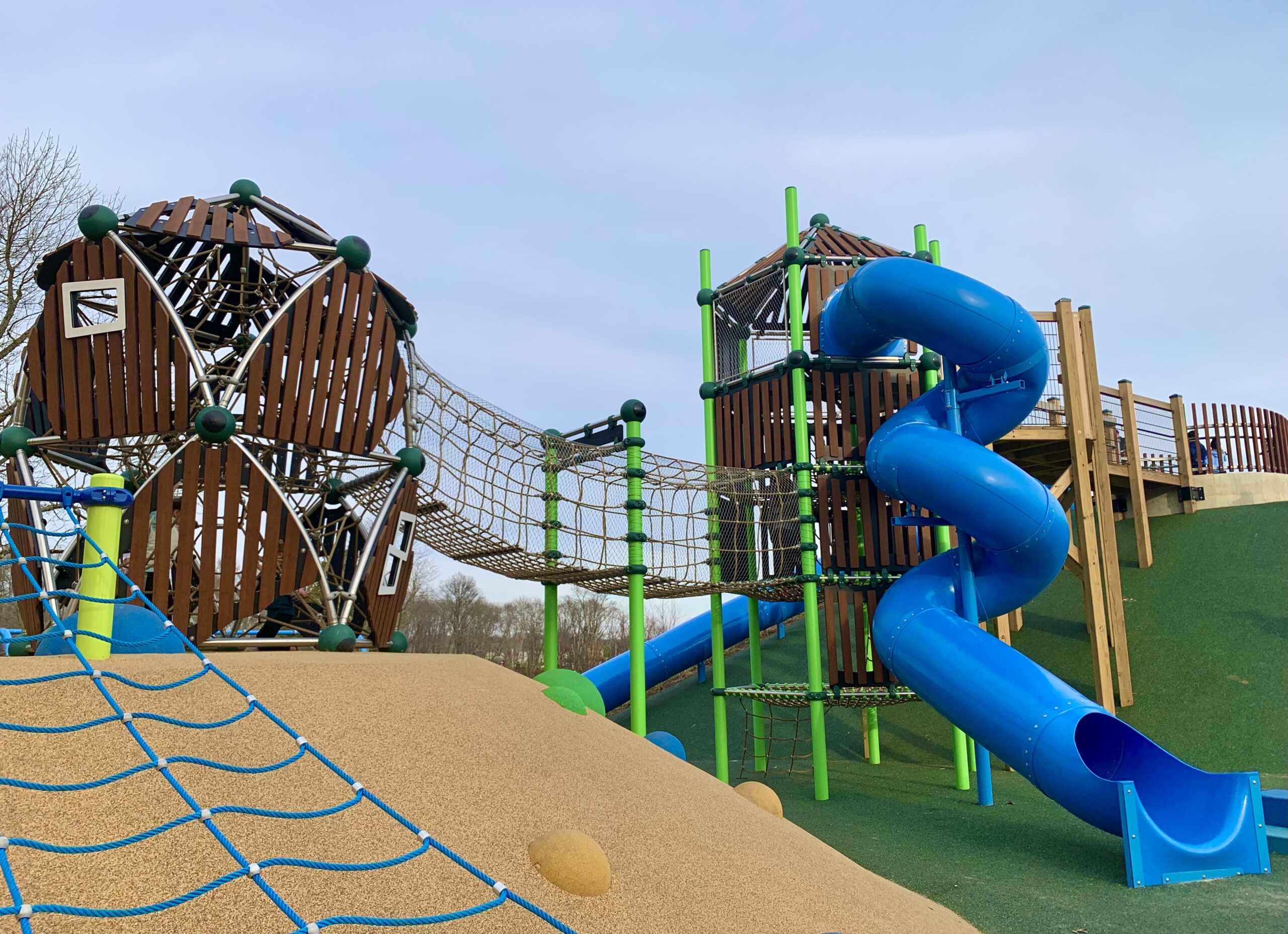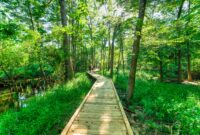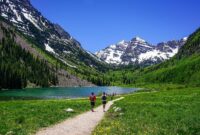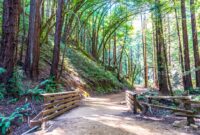Parks near me with trails offer a gateway to outdoor exploration, catering to a diverse range of interests and fitness levels. Whether you’re a seasoned hiker seeking challenging climbs or a family looking for a leisurely stroll, the abundance of options ensures a fulfilling experience. This exploration delves into the intricacies of finding the perfect park, encompassing everything from locating nearby green spaces to understanding trail descriptions and amenities.
We’ll examine how location-based services and map integration enhance the search process, providing users with detailed information about trail lengths, difficulty levels, accessibility features, and available amenities. The importance of user reviews and ratings in shaping the user experience will also be discussed, along with strategies for effectively managing and displaying this valuable feedback.
Understanding User Intent Behind “Parks Near Me With Trails”
The search query “parks near me with trails” reveals a user’s desire for outdoor recreation opportunities within a convenient geographical proximity. Understanding the nuances behind this seemingly simple query requires examining the diverse motivations and planned activities of potential users. This analysis will explore the various needs driving this search, ultimately leading to a better understanding of user intent.
The motivations behind searching for “parks near me with trails” are multifaceted and depend heavily on individual preferences and lifestyles. Users aren’t simply searching for a location; they’re searching for an experience. This search reflects a need for both physical and mental well-being, often interwoven with social aspects.
User Needs and Motivations
Users searching for “parks near me with trails” may be driven by a variety of needs. These include the desire for physical exercise, stress reduction, connection with nature, opportunities for photography, dog-walking, family outings, or even a quiet place for contemplation. The specific activity often dictates the type of trail and park features the user prioritizes. For instance, someone seeking a strenuous workout will look for longer, more challenging trails, whereas a family with young children might prefer shorter, easier paths with playgrounds nearby.
Potential User Activities
A wide range of activities can be undertaken in parks with trails. These activities include, but are not limited to: hiking, jogging, running, cycling, birdwatching, dog walking, picnicking, photography, nature study, and simply enjoying a peaceful stroll. The specific activity will influence the user’s choice of park and trail based on factors like trail length, difficulty, terrain, and available amenities. For example, a cyclist would prioritize parks with smooth, paved trails, while a hiker might seek out more rugged, unpaved options.
User Personas
To better understand user intent, let’s consider three distinct user personas:
- The Fitness Enthusiast: This persona is primarily driven by the need for physical exercise. They are likely to search for parks with longer, challenging trails, potentially with elevation gain, and might prioritize features like trail maps and distance markers. They are less concerned with amenities like playgrounds or picnic areas and more focused on the intensity of the workout they can achieve.
- The Family Outing Planner: This persona is focused on finding a safe and enjoyable location for a family outing. They will likely prioritize parks with shorter, easier trails, playgrounds, picnic areas, and potentially restrooms. Safety and accessibility are key considerations for this persona. They may also be looking for parks with shaded areas or other amenities that make the outing comfortable for children.
- The Nature Lover: This persona seeks a connection with nature and a tranquil escape from the city. They might prioritize parks with scenic trails, opportunities for wildlife viewing, and minimal human interference. Amenities are less important than the natural beauty and tranquility of the environment. They may be interested in parks with educational signage or opportunities for nature photography.
Trail Information and Descriptions
Providing comprehensive trail information is crucial for users searching for parks and trails near them. Clear and concise descriptions allow users to quickly assess whether a trail suits their needs and abilities. This ensures a positive and safe experience for all park visitors.
Effective trail descriptions should include several key elements to help users make informed decisions. These elements allow users to filter their search based on their preferences and physical capabilities.
Essential Information for Trail Descriptions
A well-structured trail description should include the following information:
| Attribute | Description | Example |
|---|---|---|
| Difficulty | Rate the trail’s difficulty level. Consider factors like elevation gain, terrain, and overall length. | Easy, Moderate, Challenging, Strenuous |
| Length | Specify the trail’s total length in miles or kilometers. | 2.5 miles (4 km) loop trail |
| Surface Type | Describe the trail’s surface, noting any variations. | Paved, gravel, dirt, rocky, uneven |
| Points of Interest | Highlight any notable features along the trail. | Scenic overlooks, historical markers, wildlife viewing areas, water features |
Descriptive Language for Different Trail Types
The language used to describe a trail should accurately reflect its character.
Scenic Trails: “This leisurely trail winds through a lush forest, offering breathtaking views of the valley below. Wildflowers bloom in abundance during spring, creating a vibrant tapestry of color.”
Challenging Trails: “Prepare for a strenuous climb on this rocky trail. Steep inclines and uneven terrain will test your endurance. However, the panoramic views from the summit are well worth the effort.”
Family-Friendly Trails: “This easy, paved trail is perfect for a leisurely stroll with the whole family. Gentle slopes and smooth surfaces make it accessible for strollers and wheelchairs. Look out for playful squirrels and colorful birds along the way.”
Visual Representation of Parks and Trails
Creating visually appealing maps and trail representations for park information is crucial for user engagement and understanding. Effective visuals make navigating and exploring parks significantly easier, encouraging more people to enjoy outdoor spaces. Clear and concise imagery can transform complex information into an easily digestible format.
Effective visual representation relies on a strategic combination of map design, color-coding, and iconography. The goal is to present information in a way that is both aesthetically pleasing and highly informative, allowing users to quickly grasp key details like trail difficulty, length, and points of interest.
Color-Coding for Trail Information
Color-coding is a powerful tool for conveying information quickly and intuitively. Different colors can represent various aspects of a trail, such as difficulty level (e.g., green for easy, blue for moderate, red for difficult), trail surface type (e.g., brown for dirt, gray for paved), or even trail use (e.g., purple for hiking only, orange for biking and hiking). Consistent use of a color legend is essential to avoid confusion. For example, a universally understood system might use green for easy trails, blue for moderate trails, and red for difficult trails, ensuring users instantly understand the level of challenge.
Iconography for Key Features
Icons provide a visual shorthand for various park features. Clear and easily recognizable icons can represent points of interest such as restrooms, picnic areas, viewpoints, water fountains, and parking lots. These icons, strategically placed on the map, help users quickly locate amenities and plan their routes. For instance, a simple toilet icon indicates restroom facilities, while a stylized tree icon might denote a shaded area. The key is to use widely understood symbols or create a custom legend that is easily interpretable.
Sample Park Map Description
Imagine a map of “Willow Creek Park”. The map uses a muted green background to represent the park’s natural setting. A winding blue line depicts the main trail, which is labeled “Willow Creek Trail” in a clear, legible font. A thinner, dashed red line shows a shorter, more challenging spur trail labeled “Ridge View Trail.” Color-coded icons indicate key features: a brown picnic table icon marks a designated picnic area, a blue water droplet icon represents a water fountain, and a small parking symbol shows the location of the parking lot. A legend in the corner clearly defines each color and icon. The caption might read: “Explore Willow Creek Park! This map highlights the Willow Creek Trail (blue) and the more challenging Ridge View Trail (red). Locate amenities like picnic areas, water fountains, and parking using the key below.” The overall style is clean and uncluttered, ensuring the map is easy to read and understand at a glance.
Additional Relevant Information
Planning a visit to a local park with trails requires more than just knowing the location and trail details. Understanding operational aspects like opening hours and potential fees significantly enhances the overall experience. Knowing about nearby attractions can also help you plan a more comprehensive outing. This section provides essential supplementary information to help you make the most of your park visit.
Knowing the park’s operating hours is crucial for ensuring your visit aligns with its availability. Fees, if any, can vary depending on the park’s facilities and services. Nearby attractions can add value to your trip by offering complementary activities.
Park Operating Hours and Fees
Most parks maintain regular operating hours, often extending from sunrise to sunset. However, some may have specific opening and closing times, particularly during winter months or due to special events. Entrance fees, if applicable, can range from free access to a nominal charge, depending on the park’s size, amenities, and management. For example, a large national park might have a daily entrance fee, while a smaller, locally maintained park may be free. Check the park’s official website or contact local park authorities for precise information. This information is usually clearly displayed at the park entrance as well.
Nearby Attractions and Amenities
Complementing your trail experience, many parks are located near other points of interest. These could include museums, historical sites, restaurants, or other recreational facilities. For instance, a park near a historical landmark might offer a combined historical and nature-based experience. Knowing about such attractions beforehand allows for a more comprehensive itinerary. Similarly, the availability of restrooms, picnic areas, and water fountains within the park itself are important amenities to consider. These facilities enhance the comfort and convenience of your visit.
Accessibility Information
Accessibility is a key consideration for many park visitors. Information regarding accessibility features such as paved trails, ramps, accessible restrooms, and parking should be readily available. For example, a park’s website or informational brochures often detail the accessibility features available. Knowing this information beforehand can ensure that everyone in your group can comfortably enjoy the park’s amenities and trails.
Epilogue
Ultimately, the search for “parks near me with trails” transcends a simple query; it’s a quest for connection with nature and a personalized outdoor experience. By leveraging technology and user-centric design, we can create platforms that empower individuals to discover and enjoy the wealth of natural resources in their vicinity. The combination of accurate data, engaging visuals, and helpful user reviews fosters a community around outdoor recreation, encouraging exploration and appreciation of local parks.




